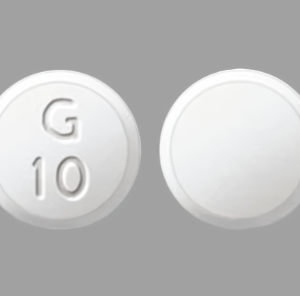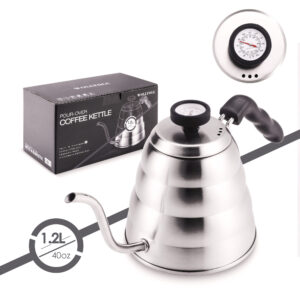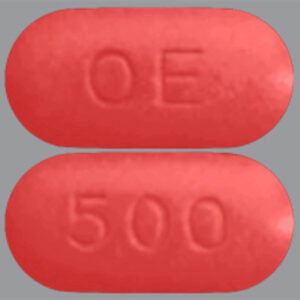Delivery Method: Via Email Reference #: 320-25-86 Product: Drugs Recipient:
Recipient Name
Mr. Jin Soo Baek
Recipient Title
Managing Director
Daewoo Pharmaceutical Co., Ltd.
153, Dadae-ro, Saha-gu
Busan
49393
South Korea
Issuing Office: Center for Drug Evaluation and Research (CDER)
United States
Warning Letter 320-25-86
July 2, 2025
AMENDED
(This letter replaces Warning Letter No. 320-25-86 dated June 26, 2025)
Dear Mr. Baek:
The United States Food and Drug Administration (FDA) inspected your drug manufacturing facility, Daewoo Pharmaceuticals Co., Ltd., FEI 1000448124, at 153, Dadae-ro, Saha-gu, Busan, from January 6 to 15, 2025.
This warning letter summarizes significant violations of Current Good Manufacturing Practice (CGMP) regulations for finished pharmaceuticals. See Title 21 Code of Federal Regulations (CFR), parts 210 and 211 (21 CFR parts 210 and 211).
Because your methods, facilities, or controls for manufacturing, processing, packing, or holding do not conform to CGMP, your drug product are adulterated within the meaning of section 501(a)(2)(B) of the Federal Food, Drug, and Cosmetic Act (FD&C Act), 21 U.S.C. 351(a)(2)(B).
We reviewed your February 12, 2025 response to our Form FDA 483 in detail and acknowledge receipt of your subsequent correspondence.
During our inspection, our investigators observed specific violations including, but not limited to, the following.
1. Your firm failed to establish and follow appropriate written procedures that are designed to prevent microbiological contamination of drug products purporting to be sterile, and that include validation of all aseptic and sterilization processes (21 CFR 211.113(b)).
Inadequate Smoke Studies
Smoke studies showed a lack of unidirectional airflow in your ISO 5 aseptic processing operation. Multiple instances of turbulent airflow in critical areas of filling line (b)(4) were noted, including above the (b)(4). In addition, smoke study videos did not include set-up of the aseptic processing line or filling line interventions that sufficiently represent your commercial manufacturing process.
In your response, you commit to repeat smoke studies with defined set-up and interventions. Your response is inadequate as you do not provide details, such as how you will address line deficiencies, when you will perform the smoke studies, and what interventions will be included.
Inadequate Media Fill Program
Your media fills failed to accurately simulate commercial operations. Our inspection found that the aseptic operations simulated during your media fills were not sufficiently representative of aseptic manufacturing operations. We observed significantly more interventions performed during routine batch manufacturing that were either not simulated or reduced in quantity in media fills, as compared to what was observed during production. Notably, a substantial number of these interventions during routine production were unplanned.
In addition, the type, frequency, and time of interventions are not routinely documented in production batch records.
Your firm also did not require operators to participate in a media fill prior to working in the aseptic processing operation.
Your response is inadequate. You commit to documenting routine interventions during manufacturing but fail to evaluate the interventions used in your media fill program and their inadequate representation of routine production. Your operators performed numerous, manually intensive interventions during aseptic operations. As such, the quantity of process simulation interventions and the duration of the media fill should closely resemble the actual manufacturing process. If a media fill program fails to incorporate contamination risk factors and closely simulate actual drug product exposure, the state of process control and assurance of sterility cannot be accurately assessed.
Poor Practices in the Aseptic Processing Areas
During the inspection of your facility, we observed poor practices in ISO 5 areas during the aseptic processing of sterile drug products. These poor practices included, but are not limited to:
- Exposed skin in the ISO 5 area (e.g., forehead).
- Use of non-sterile tape on the filling line.
- Storage of machine tools and spare parts, for use on the filling line, in a (b)(4) of the ISO 5 area.
Your response is inadequate because it does not address the lack of oversight of the operators’ aseptic practices and evaluate the insufficiencies in their training. Further, these poor aseptic practices were not evaluated to determine the impact to aseptic processing operations.
Insufficient Personnel Monitoring
The personnel monitoring for operators working in the ISO 5 area was not sufficient to assure sterility. For example, the locations chosen for personnel monitoring were not scientifically justified, nor was the practice of using (b)(4) plates for one hand and (b)(4) for the other. In addition, there was no written procedure for gowning qualification.
Your response is inadequate, as you fail to conduct a retrospective review of your aseptic personnel monitoring practices.
In response to this letter, provide the following:
- Comprehensive risk assessment of all contamination hazards with respect to your aseptic processes, equipment, and facilities, including an independent assessment that includes, but is not limited to:
o All human interactions within the ISO 5 area
o Equipment placement and ergonomics
o Air quality in the ISO 5 area and surrounding room
o Facility layout
o Personnel Flows and Material Flows (throughout all rooms used to conduct and support sterile operations) - A detailed remediation plan with timelines to address the findings of the contamination hazards risk assessment. Describe specific tangible improvements to be made to aseptic processing operation design and control.
- Your plan to ensure appropriate aseptic practices and cleanroom behavior during production. Include steps to ensure routine and effective supervisory oversight for all production batches. Also describe the frequency of quality unit (QU) oversight (e.g., audit) during aseptic processing and its support-operations.
- A thorough retrospective review and risk assessment that evaluates how poor aseptic technique and cleanroom behavior may have affected the quality and sterility of your drugs.
- Smoke studies under dynamic conditions, with thorough and complete evaluations of aseptic interventions and operator positioning within the critical filling areas. After you remediate your aseptic operation, provide smoke studies that visualize airflow and critically evaluate unidirectional airflow. Include a video of your dynamic smoke studies.
- A comprehensive summary of your remediated media fill program that ensures appropriate simulations of worst-case conditions in commercial manufacturing.
2. Your firm failed to perform operations within specifically defined areas of adequate size and to have separate or defined areas or such other control systems necessary to prevent contamination or mix-ups in aseptic processing areas (21 CFR 211.42(c)(10)).
Equipment as a Route of Contamination
The design of the aseptic processing line used to manufacture over-the-counter (b)(4) drug products was inadequate. Line (b)(4) is a traditional filling line consisting of an ISO 5 area (b)(4) and a surrounding ISO 7 area. The line involves manually intensive (b)(4) interventions, and the HEPA filter layout leaves approximately 10-centimeter gaps due to overhead lights in between the filters that appear to affect unidirectional airflow.
Furthermore, you did not sterilize direct product contact equipment that holds primary container and closure components for your sterile drug products. These equipment were disinfected with (b)(4), which are not sterilants. You also use (b)(4) approximately (b)(4), which is a decontaminating agent.
Your response is inadequate. You commit to turning Line (b)(4) into an (b)(4) restricted access barrier ((b)(4)RAB) filling line. However, you did not provide detailed plans for how you will redesign your filling line and conduct a risk assessment for products currently released to the U.S. Market.
Environmental Monitoring (EM)
The EM of your aseptic processing operations was inadequate. The locations identified for EM in ISO 5 and ISO 7 areas lacked scientific justification and were not sufficiently located where the aseptic operations are taking place.
The consistent and meaningful contamination level in ISO 7, along with frequent manually intensive interventions, posed a high risk to sterile products on your aseptic processing line.
Your response is inadequate. You commit to repeating the EM risk assessment and trending EM data but fail to include plans for how you will assess your line after redesign.
A vigilant, ongoing EM program is essential to detect and respond to potential product contamination hazards in your manufacturing environment in a timely manner. Loss of environmental control in an aseptic manufacturing facility can ultimately pose a serious hazard to patients.
In response to this letter, provide the following:
- Your corrective action and preventive action (CAPA) plan to implement routine, vigilant operations management oversight of facilities and equipment. This plan should ensure, among other things, prompt detection of equipment/facilities performance issues, effective execution of repairs, adherence to appropriate preventive maintenance schedules, timely technological upgrades to the equipment/facility infrastructure, and improved systems for ongoing management review.
- An independent assessment of your EM program including, but not limited to, establishing appropriate limits, sampling locations and frequencies, investigating deviations, and trend analysis. Also, ensure the implementation of a comprehensive CAPA plan.
3. Your firm failed to establish adequate written procedures for production and process control designed to assure that the drug products you manufacture have the identity, strength, quality, and purity they purport or are represented to possess (21 CFR 211.100(a)).
Visual Inspection
Your post-fill visual inspection of aseptically filled drug products was insufficient to identify defects which may be present. For example, bottles were only inspected against a (b)(4) background to identify visible defects, particulates, and cloudiness. Individual defect limits were not set. Further, an Acceptable Quality Limit (AQL) sample is not obtained for quality assurance evaluation.
In addition, your visual inspector qualification process is inadequate. For example, you lack a procedure for inspector training, and the (b)(4) challenge kit is used for each of (b)(4) runs where it is not required that inspectors identify the correct defect, only the correct bottle.
Your response is inadequate. You commit to evaluating the visual inspection program and replacing the (b)(4) process with an (b)(4) one, instead of a (b)(4) inspection methods. Your program should include an appropriate combination of these techniques to ensure detection of the wide array of potential visible product defects.
In addition, you fail to provide details regarding the qualification and creation of a defect library, challenge kits, appropriate inspection protocols (including use of a (b)(4) background), and inspector training.
In response to this letter, provide the following:
- A formalized 100% visual inspection program designed to reliably detect particulate contamination and other visible defects. Your program should detail the inspection methods, identify categories of defects and their associated acceptance and rejection limits for each batch, and include inspector training and qualification.
- A retrospective review of drug product batches released without having undergone a complete and appropriate visual inspection by qualified inspectors.
- Perform a visual inspection of retain samples for all batches already in distribution and provide the results.
4. Your firm’s quality control unit failed to exercise its responsibility to ensure drug products manufactured are in compliance with CGMP, and meet established specifications for identity, strength, quality, and purity (21 CFR 211.22).
The QU failed to maintain adequate CGMP oversight. For example:
Lack of Written Procedures (211.100)
Numerous written procedures were either missing or lacked sufficient detail to ensure consistent repeatability between operators. For example, the following critical processes were not contained in a written procedure: set-up of the filling line, performing interventions on the filling line, personnel monitoring, and how to perform (b)(4) decontamination of aseptic processing rooms.
In addition, written procedures lacked sufficient detail, including those for cleaning of the filling line and cleaning of the filling room.
Your response is inadequate. You commit to writing procedures for the critical items described above, however you fail to perform a comprehensive review to ensure appropriate procedures are established and followed as part of your quality system. In addition, you did not provide a comprehensive risk assessment of the product impact of the lack of sufficient procedures.
Investigations (211.192)
We noted multiple instances where thorough investigations were not completed. For example, a viable air monitoring plate dated January 22, 2024, had a significant microbial recovery for the ISO 7 area of Line (b)(4), identified as Cladosporium, a mold. The available documentation of the Cladosporium recovery noted that the same mold was found in multiple areas of the facility. You lacked a meaningful investigation into this trend.
Your response is inadequate as you did not commit to opening an investigation to examine this and other potentially adverse trends.
Complaint Handling (211.198(a))
Your complaint handling and investigation process is inadequate. Retain samples are not always evaluated for sterility unless requested by your distributor, even when the complaint indicates potential contamination. For example, you received a substantial number of complaints for burning or redness but did not perform sterility testing on retain samples until the fourth complaint was received.
Your response is inadequate. You commit to reviewing past complaints and updating your current procedure but fail to provide details for how you will incorporate testing, including but not limited to, sterility, into your complaint handling process in the future.
Raw Material Testing for (b)(4) (211.84(d)(2))
Your incoming raw material sampling and testing plan for (b)(4), which is a component at high-risk of contamination with (b)(4), is inadequate.
Your response is inadequate. While you commit to testing each container of every lot moving forward, you did not commit to testing of finished products that previously used these raw materials to verify that (b)(4) are not present above specified levels.
The use of ingredients contaminated with (b)(4) has resulted in various lethal poisoning incidents in humans worldwide. See FDA’s guidance document Testing of (b)(4) to help you meet the CGMP requirements when manufacturing drugs containing ingredients at high-risk for (b)(4) contamination at (b)(4).
In response to this letter, provide:
- A commitment to provide (b)(4) test results, no later than 30 calendar days from the date of this letter, from testing retains for all lots of high-risk drug components used in the manufacture of drug products. Alternatively, if a retain of a component lot is unavailable, perform retain sample testing of all implicated finished drug product batches for the presence of (b)(4).
- A full risk assessment for drug products that are within expiry which contain any ingredient at risk for (b)(4) contamination (including, but not limited to, (b)(4)). Take prompt and appropriate actions to determine the safety of all lots of the component(s) and any related drug product that could contain (b)(4), including customer notifications and product recalls for any contaminated lots. Identify additional appropriate CAPAs that secure supply chains in the future, including, but not limited to, ensuring that all incoming raw material lots are from fully qualified manufacturers and free from unsafe impurities. Detail these actions in your response to this letter.
- A description of how you will test each component lot for conformity with all appropriate specifications for identity, strength, quality, and purity. If you intend to accept any results from your supplier’s certificate of analysis instead of testing each component lot for strength, quality, and purity, specify how you will robustly establish the reliability of your supplier’s results through initial validation as well as periodic revalidation. In addition, include a commitment to always conduct at least one specific identity test for each incoming component lot. In the case of (b)(4), and certain additional high-risk components we note that this includes the performance of parts (b)(4) of the United States Pharmacopeia (USP) monograph.
- The chemical quality control specifications you use to test each incoming lot of high-risk drug components to determine acceptability for use in manufacturing.
- A comprehensive, independent review of your material system to determine whether all suppliers of components, containers, and closures, are each qualified and the materials are assigned appropriate expiration or retest dates. The review should also determine whether incoming material controls are adequate to prevent use of unsuitable components, containers, and closures.
- A comprehensive, independent assessment of your overall system for investigating deviations, discrepancies, complaints, out-of-specification (OOS) results, and failures. Provide a detailed action plan to remediate this system. Your action plan should include, but not be limited to, significant improvements in investigation competencies, scope determination, root cause evaluation, CAPA effectiveness, QU oversight, and written procedures. Address how your firm will ensure all phases of investigations are appropriately conducted.
- A comprehensive assessment and remediation plan to ensure your QU is given the authority and resources to effectively function. The assessment should also include, but not be limited to:
o A determination of whether procedures used by your firm are robust and appropriate.
o Provisions for QU oversight throughout your operations to evaluate adherence to appropriate practices.
o A complete and final review of each batch and its related information before the QU disposition decision.
o Oversight and approval of investigations and discharging of all other QU duties to ensure identity, strength, quality, and purity of all products.
5. Your firm failed to establish and follow adequate written procedures for cleaning and maintenance of equipment (21 CFR 211.67(b)).
Your cleaning procedures lack sufficient detail to ensure repeatability between operators. We observed cleaning deficiencies and variability between operators, including wiping technique, using the same cleaning cloths for multiple areas, and failure to clean on top of the overhead light casings of the filling line.
Further, the disinfection efficacy studies for (b)(4) did not adequately address all materials of the filling line, including but not limited to, (b)(4) (filling equipment), (b)(4) and (b)(4), and (b)(4) hose).
In addition, your (b)(4) room decontamination validation is deficient (e.g., biological indicator locations are not adequately justified).
Your response is inadequate. You commit to conduct a comprehensive review and assessment of cleaning and disinfection practices; however, you fail to investigate the impact on the products in the U.S. Market. In addition, a retrospective review for only extraneous chromatographic peaks is not sufficient to determine if deficient cleaning practices contribute to finished product that does not meet established specifications.
In response to this letter, provide the following:
- A CAPA plan, based on the retrospective assessment of your cleaning and disinfection program, that includes appropriate remediations to your cleaning and disinfection processes and practices, and timelines for completion. Provide a detailed summary of vulnerabilities in your process for lifecycle management of equipment cleaning and disinfection. Describe improvements to your cleaning and disinfection program, including enhancements to cleaning and disinfection effectiveness; improved ongoing verification of proper cleaning and disinfection execution for all products and equipment; and all other needed remediations.
Additional Guidance on Aseptic Processing
See FDA’s guidance document Sterile Drug Products Produced by Aseptic Processing—Current Good Manufacturing Practice to help you meet the CGMP requirements when manufacturing sterile drugs using aseptic processing at https://www.fda.gov/media/71026/download.
Quality Systems
Your firm’s quality systems are inadequate. For guidance on establishing and maintaining CGMP-compliant quality systems, see FDA’s guidances: Q9 Quality Risk Management at https://www.fda.gov/media/167721/download and Q10 Pharmaceutical Quality System at https://www.fda.gov/media/71553/download.
Drug Production Suspended
We acknowledge your commitment to suspend production of all drugs and that you deregistered your facility as a drug manufacturer. In response to this letter, clarify whether you intend to resume manufacturing drugs for the U.S. market at this facility in the future.
If you plan to resume any manufacturing operations regulated under the FD&C Act, notify this office before resuming your drug manufacturing operations. If your firm intends to resume manufacturing drugs, you should engage a consultant qualified as set forth in 21 CFR 211.34 to evaluate your operations to assist your firm in meeting CGMP requirements. Your use of a consultant does not relieve your firm’s obligation to comply with CGMP. Your firm’s executive management remains responsible for resolving all deficiencies and systemic flaws to ensure ongoing CGMP compliance. In your notification to the Agency, provide a summary of your remediations to demonstrate that you have appropriately completed all CAPAs.
Conclusion
The violations cited in this letter are not intended to be an all-inclusive list of violations that exist at your facility. You are responsible for investigating and determining the causes of any violations and for preventing their recurrence or the occurrence of other violations.
Correct any violations promptly. FDA may withhold approval of new applications or supplements listing your firm as a drug manufacturer until any violations are completely addressed and we confirm your compliance with CGMP. We may re-inspect to verify that you have completed corrective actions to any violations.
Failure to address any violations may also result in the FDA refusing admission of articles manufactured at Daewoo Pharmaceutical Co. Ltd, 153, Dadae-ro, Saha-gu, Busan, into the United States under section 801(a)(3) of the FD&C Act, 21 U.S.C. 381(a)(3). Articles under this authority that appear to be adulterated may be detained or refused admission, in that the methods and controls used in their manufacture do not appear to conform to CGMP within the meaning of section 501(a)(2)(B) of the FD&C Act, 21 U.S.C. 351(a)(2)(B).
This letter notifies you of our findings and provides you an opportunity to address the above deficiencies. After you receive this letter, respond to this office in writing within 15 working days. Specify what you have done to address any violations and to prevent their recurrence. In response to this letter, you may provide additional information for our consideration as we continue to assess your activities and practices. If you cannot complete corrective actions within 15 working days, state your reasons for delay and your schedule for completion.
Send your electronic reply to CDER-OC-OMQ-Communications@fda.hhs.gov. Identify your response with FEI 1000448124 and ATTN: Sarah Rhoades.
Sincerely,
/S/
Francis Godwin
Director
Office of Manufacturing Quality
Office of Compliance
Center for Drug Evaluation and Research







